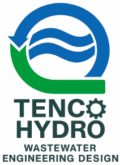Considering Automation With Your Tank Control? Let Us Help You
Incorporating automation into industrial tank design revolutionizes operations by enhancing efficiency, accuracy, and safety. Automation involves integrating advanced technologies, such as sensors, controllers, and software systems, to monitor and control various tank processes. Here, we delve into the critical considerations when designing automated tanks for industries such as food and beverage, pharmaceuticals, chemicals, and more.
